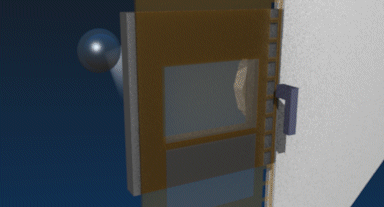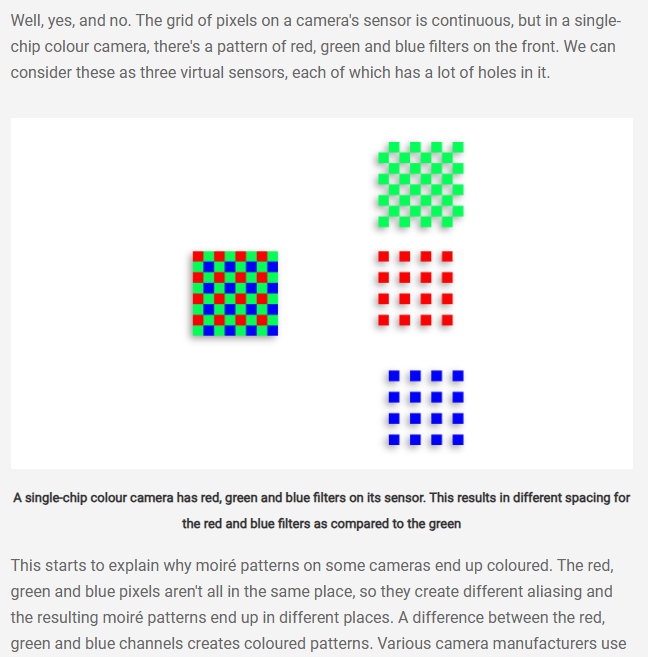
ac6000cw
Members-
Posts
683 -
Joined
-
Last visited
Content Type
Profiles
Forums
Articles
Everything posted by ac6000cw
-
I own the last three lenses on that list. The 20mm F1.7 is a nice lens optically, but for video use its AF is noisy and the minimum aperture is F16 (versus F22 for most micro4/3 lenses). No OIS. The Pana 12-32mm F3.5-5.6 is nice - weighs almost nothing and is very compact when closed and has OIS (with dual-IS support on the GX85 etc.). No manual focus ring, which means no MF on Olympus/OMDS bodies as they don't support MF adjustment via the camera body controls (AFAIK all Olympus lenses have a focus control). Panasonic does support body MF control for it. Tends to be my go-to lens if I'm taking a second camera on a trip, to keep the size down. Olympus M.Zuiko Digital ED 14-42mm F3.5-5.6 EZ - I think it's OK but nothing special - the power zoom isn't especially smooth, but it does have both zoom and focus rings on a slim pancake lens.
-
Here are a few old 2160p25 and 1080p50 SOC clips from my GX800 (which I no longer have) - https://drive.google.com/open?id=13vWtrMzGKQ5qR1l2zCr_NBVjIowFuy4V&usp=drive_fs . All hand-held, probably using the 12-32mm or 14-42mm kit lenses, standard picture profile, shutter priority (using the 'flicker reduction' setting). The train going over the road crossing (P1000474.MP4) shows the rolling shutter nicely.
-
On the gx800, if you're happy with 4k30p, you can use '4k photo' mode to shoot video with PASM control. Also you can use the 'flicker reduction' menu setting to fix the shutter speed to 1/120, 1/100, 1/60 or 1/50 in normal video mode.
-
I don't own the R7, but this is a detailed review of its video capabilities - https://www.optyczne.pl/65.1-Inne_testy-Canon_EOS_R7_-_test_trybu_filmowego_Wstęp.html
-
Have you thought about the (APS-C) Canon R7? In the UK the R7 bundled with the RF-S 18-150mm f3.5-6.3 IS STM Lens is £1799 at the moment, so you might be able to get it within your budget in Italy. Has decent IBIS, good AF and dual card slots, and some contributors on here like it. Does 4k60 and high quality oversampled 4k up to 30p (the rolling shutter is high at 30ms in oversampled mode, but much better at 15ms in the subsampled 4k modes).
-
Re. L-mount lens choices - Don't forget the S5ii/iix is APS-C crop in 4k60p (and you can choose APS-C crop for other video modes), which means the cheap but good Pana 20-60mm 'kit' lens becomes about 90mm equivalent at the tele end. There's also a pixel-pixel crop mode, which is about 3x magnification in FHD so 180mm equivalent (at reduced video quality of course).
-
What about the much cheaper A6700 (which probably has the same sensor as the FX30 and can do 4k60p and 4k120p, but no fan so overheating may be an issue)?
-
...and 4K 30p/25p/24p 4:2:2 10-bit internal recording at 150Mbps H264/AVC.
-
Is this meant to be a dedicated video camera or a hybrid for both video & stills? If it's for hybrid video & stills use, the X-S20 is probably better overall because it has a mechanical shutter and a viewfinder. One downside of the Fuji's is they don't support plug-in power for microphones, if that is important to you. The FX30 is electronic shutter only and no viewfinder, but has a cooling fan (better for long recordings) and the E-mount lens choice is huge. At the moment Wex in the UK are selling a new FX30 body for £1879 (with a voucher code) until 31-01-2024 - https://www.wexphotovideo.com/sony-cinema-line-fx30-camera-3069656/ Also, if you are thinking about the S5 ii, note it has a major crop in 4k60p (so it's an APS-C camera in that situation). It's the same situation with most of the other lower-end FF cameras. (If you can live with micro-4/3, a used G9 plus the cheaper/smaller/lighter Pana 12-60mm lens will get you excellent 4k60p and superb stabilization for peanuts - around £700 for both used)
-
Panasonic S5 II (What does Panasonic have up their sleeve?)
ac6000cw replied to newfoundmass's topic in Cameras
Yes - If Panasonic is intent on being a significant player in the full-frame hybrid market, they have to offer 8k video now that Sony, Canon & Nikon offer it. Fuji even have it on the sub-$2000 (APS-C) X-H2. As Panasonic and Leica have been long-term camera development partners, if Leica are going to have 8k video on a camera soon Panasonic can't really be far behind in offering it. I'd be very surprised if the the new Leica doesn't have largely Panasonic electronics and software inside it. -
Panasonic S5 II (What does Panasonic have up their sleeve?)
ac6000cw replied to newfoundmass's topic in Cameras
I'd go for a high-res S5 ii, as they've already done the video-centric 'x' version of the S5 ii. If it is that, any bets on it supporting 8k video? -
Panasonic S5 II (What does Panasonic have up their sleeve?)
ac6000cw replied to newfoundmass's topic in Cameras
I agree the GX85 is one of those cameras where the design and features were 'just right' when it came out. Its main problem (for me) is the on-board audio is poor (terrible electrical/IBIS noise breakthrough) and there's no mic jack, so getting decent audio means using a separate recorder. Wanting a genuinely pocket-sized camera with decent video and on-board audio, plus reasonable stabilization and a mic jack, I've just bought a refurbished Sony ZV-1 (original version). Only had it a few days and been able to test it much yet, but so far I'm quite impressed with the performance of such a compact camera (and the build quality seems pretty good - it's a nice solid-feeling camera, like the GX85 is). It's only a 1" sensor, but it's BSI with reasonably low rolling shutter and decent low-light performance. Quick size comparison of HX99/ZV-1/GX800/GX85/X-S20 - https://camerasize.com/compact/#797,847,699.397,673.397,908.706,ha,t (I also own the Sony HX99 small-sensor/30x zoom camera on the far left - that really is small!) -
Panasonic S5 II (What does Panasonic have up their sleeve?)
ac6000cw replied to newfoundmass's topic in Cameras
I'd also love them to do 1), but I can imagine some of the YouTube influencer/reviewer comments: It's expensive It overheats recording 4k60p after 10 minutes if it's really small and light - "There's no IBIS" If it's got IBIS - "It's not small enough and it's too heavy" The battery life is too short It doesn't have a fully articulated/flip out screen There's no headphone jack Most of the above list would not actually be issues for the vast majority of potential buyers if it was cheap enough, but it would be a hard sell if it's almost as expensive as a G9ii Maybe the answer would be to market it as a Leica camera? -
Panasonic S5 II (What does Panasonic have up their sleeve?)
ac6000cw replied to newfoundmass's topic in Cameras
Panasonic versus Olympus/OMDS micro4/3 lenses are another example of opposite zoom rings on the same mount... -
The animation below from a Wikpedia page about rotary disc shutters illustrates their operation (and film pull-down) nicely, showing that the sweep of the edge (the rolling shutter equivalent) is quite short in relation to the exposure time: (Image By Joram van Hartingsveldt - Own work, CC BY-SA 3.0, https://commons.wikimedia.org/w/index.php?curid=924146) Film projectors have basically the same mechanism, except that usually the shutter operates at twice the rate to create 48 Hz flicker which is much less noticeable/annoying to viewers than 24Hz.
-
$6000, same ballpark as the a1.
-
Yes, especially as some full-frame cameras (e.g. S1, S5, S5ii, S1H, a7 IV, a7C II) have an APS-C crop in 4k50/60p, so it's a sensible video lens option for those in addition to native APS-C cameras. I think MrSMW uses it sometimes on his L-mount cameras?
-
What's the problem with the viewfinder? Is the moire mainly producing 'false colour' or just patterning (like the 'jeans' example you posted earlier), and is it an issue in both 1080p and 4k?
-
The LX100 size comparison is interesting (I own the original version, but usually use a micro4/3 ILC instead): From L to R: Sony ZV-1, Pana ZS100/TZ100, LX100 and G100+12-32mm The LX100 is actually quite chunky in comparison to the ZV-1 and ZS100/TZ100 (the LX10/LX15 is about the same size as the ZV-1 and shares it's lack of viewfinder). I think the LX100 is a very nice stills camera, but the video C-AF is poor, the OIS is only 'OK', there's noticeable aliasing in 1080p, the power zoom isn't very smooth, the rear screen is fixed and if you look at a spectrum analysis of the audio it's got a deep, narrow notch in the mid-range. But at least it has a viewfinder. I'm actually quite tempted by a used G100...but it's probably just GAS really...🙂
-
No - the base sensor resolution is the same, it's how the data is read out from the photo sites and processed that changes in different modes. If you sub-sample a digital image to reduce it's resolution without low-pass filtering it first (to keep the frequencies under the Nyquist limit), you'll get aliasing-related artifacts (like moire) at some point dependent on the image content. Video (and film) suffers from temporal aliasing as well, which we reduce by introducing motion blur (a form of low-pass filtering).
-
I agree, but some are better at minimising the impact of it e.g. like the GX85/G95/GX850 you mentioned above. Moire in 1080p is more noticeable on the Oly E-M1 ii & iii than on those, despite having a higher-res sensor (and noticeably soft 1080p video).
-
This is the same comparison with 4k video - https://www.dpreview.com/reviews/image-comparison/fullscreen?attr18=daylight&attr13_0=panasonic_dcgh5&attr13_1=panasonic_dmcgx85&attr13_2=sony_a6600&attr13_3=panasonic_dcg95&attr15_0=jpeg&attr15_1=jpeg&attr15_2=jpeg&attr15_3=jpeg&attr16_0=200&attr16_1=200&attr16_2=200&attr16_3=200&attr171_1=1&normalization=full&widget=478&x=-0.5653754912361596&y=-0.0730609051110552 ...and this with still images (same test image and same cameras, so same sensors and filters) - https://www.dpreview.com/reviews/image-comparison/fullscreen?attr18=daylight&attr13_0=panasonic_dcgh5&attr13_1=panasonic_dmcgx85&attr13_2=sony_a6600&attr13_3=panasonic_dcg95&attr15_0=jpeg&attr15_1=jpeg&attr15_2=jpeg&attr15_3=jpeg&attr16_0=200&attr16_1=200&attr16_2=200&attr16_3=200&attr171_1=1&normalization=full&widget=478&x=-0.5653754912361596&y=-0.0730609051110552 Note the A6600 moire is much reduced in 4k video and is almost non-existent in stills mode. So the bad 1080p moire on the A6600 isn't coming from "the moire is present the moment the light is collected on the sensor" (which would show up in stills mode), it's being caused by the way data from the photosites is being collected, sub-sampled and processed. I suspect the image data used for 1080p video on the A6600 is being line/pixel skipped on sensor or as it's read out from the sensor and then de-bayered. The GX85 and G95 1080p is probably pixel-binned on-sensor, so it's better but has some moire, whereas the GH5 generates 1080p by reading the data and de-bayering it at high resolution then resamples it (using super-sampling) down to 1080p. I agree - although I think some cameras/manufacturers do a better/cleverer job of minimising it at the de-bayering stage
-
The older Sony APS-C cameras like the A6500/A6600 are/were terrible for moire in 1080p - this is a DPreview 'video still' test chart comparison of GH5, GX85, G95 and A6600 at 1080p - https://www.dpreview.com/reviews/image-comparison/fullscreen?attr29_0=panasonic_dcgh5&attr29_1=panasonic_dmcgx85&attr29_2=sony_a6600&attr29_3=panasonic_dcg95&attr72_0=1080&attr72_1=1080&attr72_2=1080&attr72_3=1080&normalization=full&widget=494&x=-0.4377130790929456&y=0.008264403455490291 (The GH5 shows how sensor to video processing should be done, the A6600 shows how not to do it!) In modern 'stills' cameras based in Bayer pattern sensors, the moire is basically caused by the large gaps between the different colour sites, so you get serious colour aliasing (when there's no effective OLPF in front of the sensor) if the light pattern happens to match the photosites of a single (R, G or B) colour. From https://www.redsharknews.com/production/item/5209-what-really-causes-moire-in-cameras :
-
At twice the weight and 1.6x the length of the 35-100 F2.8, I didn't even contemplate the 40-150 Pro F2.8. I did consider the Oly 40-150 Pro F4 as it's about the same size & weight as the 35-100 F2.8, but decided I'd prefer the faster aperture. Compromises... Basically my target weight limit for body + lens is around 1 kg.








